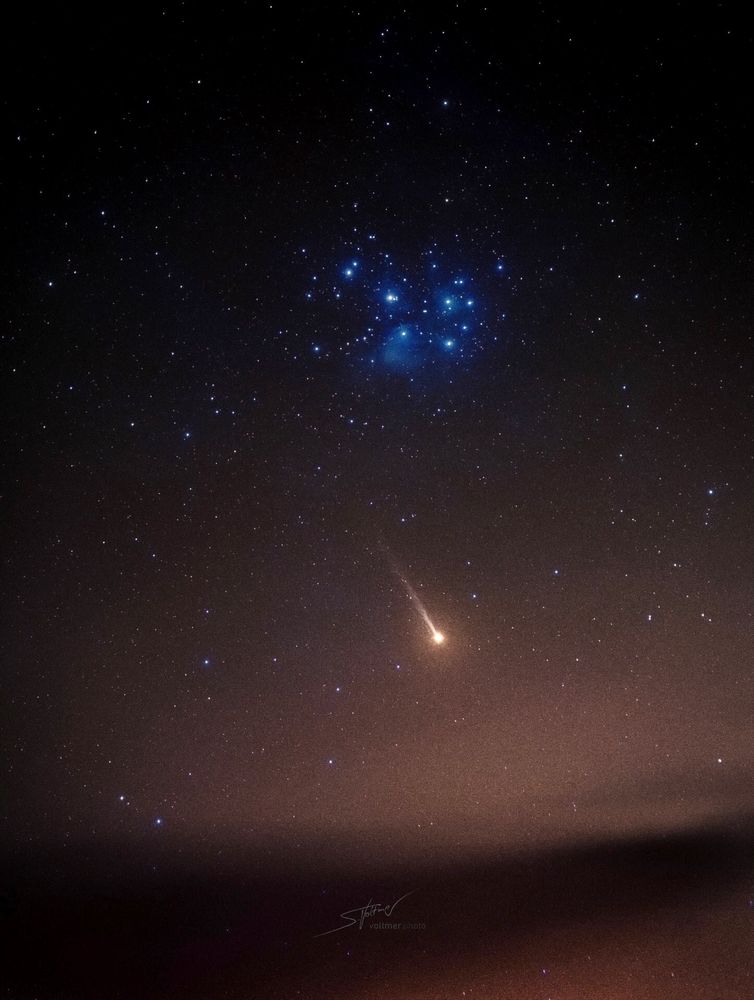
See that bright, glowing object with a tail?
That's not a comet.
That's the planet Mercury.
@nxp.bsky.social
Space, NASA, and beyond.

See that bright, glowing object with a tail?
That's not a comet.
That's the planet Mercury.

Galaxy M101 as seen from the Midwest in the USA. The Pinwheel Galaxy is a spiral-shaped galaxy about 21 million light years away from Earth. Scientists call this swirling galaxy M101. You can find it in the constellation Ursa Major, or the "Big Dipper," in the Northern Hemisphere. With a nice, dark sky, you can see it with binoculars or a small telescope.
Here exists an entire galaxy as seen from the Midwest. The Pinwheel Galaxy is a spiral-shaped galaxy about 21 million light years away from Earth. Scientists call this swirling galaxy M101.
- NASA.gov and pic credit is by yours truely.
We need more science and discovery in the News. ❤️
16.02.2025 23:31 — 👍 0 🔁 0 💬 0 📌 0 19.12.2024 18:23 — 👍 1 🔁 0 💬 0 📌 0
19.12.2024 18:23 — 👍 1 🔁 0 💬 0 📌 0
Carl Sagan: we don’t have science in the news media for some reason.
16.12.2024 23:57 — 👍 1 🔁 0 💬 0 📌 0
The pelican nebula, backyard long exposure. 1800 light years away, can show up even as a faint object !
17.07.2024 05:29 — 👍 1 🔁 0 💬 0 📌 0
The moon tonight appears large on the horizon, however it’s the same size no matter where in the sky it is. So cool!!
24.04.2024 05:01 — 👍 1 🔁 0 💬 0 📌 0

First test pic of the sun with this solar stack lens. Sometimes you improvise.
07.04.2024 00:09 — 👍 1 🔁 0 💬 0 📌 0
With 400 billion stars in our galaxy, estimates would give us over a trillion planets. The problem is the width of the Milky Way is 105,000 light years. Given current tech our craft might be able to go one light year: in 4200 years, but Starshot nano ship could be 5 years going 100 mill miles/hr.
24.02.2024 16:42 — 👍 2 🔁 0 💬 0 📌 0


We imaged the Rosette Nebula and stacked it. My oh my!
You can see the different parts of the puzzle we have to put together down below. We go from the black and white images from a filter on the telescope to using gimp to get them back into color.


Here is what you get if you can get great focusing (1hr), imaging the bubble nebulae here for 1.5 hrs on each light band (x3) to a black and white sensor, then stacking each color band to make the clearest set of images. Then you combine those three separate color bands in Gimp. You can get this!
09.02.2024 20:11 — 👍 1 🔁 0 💬 0 📌 0
Before imaging a star for 5 hours, you must get a good focus curve. Focus is determined by a brightness curve for a star. If a star is blurry, pixels will be dimmer and the star will be big and out of focus. If pixels are max bright, then focus is assured.
09.02.2024 20:06 — 👍 1 🔁 0 💬 0 📌 0
Fixating on Rigel here to get a nice focus for when we begin imaging the rosette nebula. Pictured is a 16” mirror Meade telescope. Rigel is only 7-9 mil years old (our star is 5billion). It has already exhausted its core fuel and will explode and become a black hole or neutron star at some point.
09.02.2024 20:04 — 👍 5 🔁 0 💬 0 📌 1